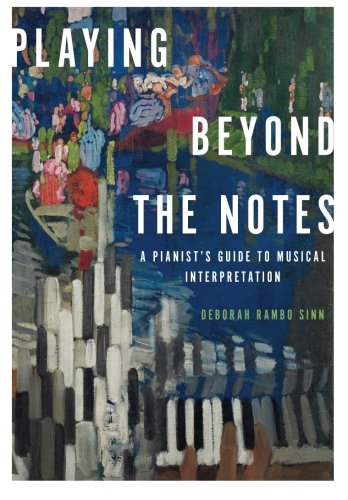 Deborah Rambo Sinn’s Playing Beyond the Notes: A Pianist’s Guide to Musical Interpretation is a helpful and delightful reference for pianists and piano teachers alike. The book is organized into twelve chapters with titles such as “Boxes and Beams,” “Ornamentation,” “Deconstructing Phrases,” and “Pedaling.” The book systematically addresses common issues and helpful guidelines for performance practice in piano literature.
Deborah Rambo Sinn’s Playing Beyond the Notes: A Pianist’s Guide to Musical Interpretation is a helpful and delightful reference for pianists and piano teachers alike. The book is organized into twelve chapters with titles such as “Boxes and Beams,” “Ornamentation,” “Deconstructing Phrases,” and “Pedaling.” The book systematically addresses common issues and helpful guidelines for performance practice in piano literature.
For every concept or principle addressed in the book, the author presents at least one example passage from a piece from the canon of standard classical piano repertoire. Readers can either play the passage themselves on the piano to experiment with the concept being addressed, or visit the companion website to listen to the provided sound recordings there. The referenced pieces include sonata movements by Beethoven, Haydn, and Mozart; Romantic works by Chopin, Schumann, Brahms, and Mendelssohn; and Bach Prelude and Fugues; and more.
Playing Beyond the Notes provides the reader insight into the way that artists can and should examine the score to find clues for forming an effective and convincing interpretation. If you have ever wished for more clarification on the various types of staccato or other articulation markings, or wanted more insight into how to understand a piece of music from its most detailed markings, sub-phrases, and phrases, all the way out to the larger-structure sections of the piece, you will find this book to be a helpful guide. My favorite chapter was the final chapter, on pedaling. In that chapter, the author provides some very helpful guidelines to follow when using pedal, supported by excellent examples.
This book is a helpful resource for piano teachers seeking to gain more strategies for guiding their advancing students play more musically. It is also a good book to recommend to advanced-level high school and adult students to read for themselves. The book is also the perfect textbook for college-level courses, such as those that address piano literature or the topic of performance practice. At the end of each chapter, there is a list of questions that could be used as discussion questions or assignments.
This book is ought to be a staple on every pianist’s bookshelf and is bound to become a timeless reference on performance practice of the 21st century.
Find it here on Amazon.


